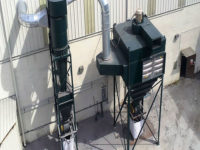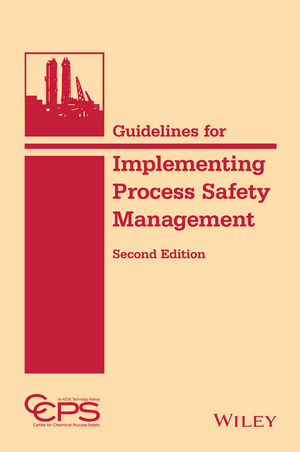Test the dust your manufacturing process generates to improve indoor air quality

Controlling the dust generated by manufacturing processes is critical to maintaining indoor air quality. A high-efficiency dust collector with cartridge-style filters can help, but it must be designed specifically for your operation to effectively filter hazardous dust to make the indoor environment safer. It is also important to analyze dust characteristics to determine the best dust collection system and filters for your application. Dust testing is valuable if you are installing a new dust collector system, starting a new manufacturing process and even if you have been generating and capturing the same type of dust for a long time. Changes in equipment, processes, environment or products can affect dust characteristics.
In 2020, the National Fire Protection Agency (NFPA) mandated that all dust collection needs be documented in a Dust Hazard Analysis (DHA) according to NFPA 652: Standard on the Fundamentals of Combustible Dust. The DHA identifies dust explosion and fire hazards, and it can help determine if the dust affects indoor air quality.
To create a complete picture of your operation, provide the testing laboratory detailed information about all of your processes that generate dust. The lab will then analyze key dust properties including particle size and shape, gravity effects, moisture level and abrasiveness. This dust sample bench testing is an excellent tool to better understand the physical properties of your dust, which forms the basis for equipment selection or modification.
Filter selection
Dust collector filter cartridges are fabricated with hundreds of square feet of media to collect and trap airborne dust particles. The media used in the cartridges is selected based on dust characteristics and the type of process. For example, dusts like crystalline silica and hexavalent chromium are hazardous to human health, and so they require high-efficiency filters that meet OSHA requirements. Other dusts, like those generated from food processing applications, may be moist or sticky and would benefit from washable polyester filter media. The NFPA recommends grounded cartridges or conductive filter media for statically charged dusts or metal-containing mixtures. Dust analysis can recommend what type of filters should be used in dust collectors, helping them to perform better. Proper filtration protects workers by greatly reducing the amount of respirable dust they are exposed to.
Dust collector performance
If your dust collector is working too hard to clear the air, using too much energy or not doing the job effectively, it might not be designed for the type of dust it is collecting. Based on a dust characteristics analysis and the DHA, your dust collector provider can determine the correct filter housing size, ductwork system design and hopper/dust discharge design for the specific dust. With a proper setup, the dust collection system will use less energy, consume less compressed air and collect dust more efficiently — ultimately leading to better air quality.
Indoor air quality guidelines
Having a strong, thorough knowledge of your dusts and their characteristics is key to remaining compliant with indoor air quality standards. Your air quality program should include goals that are based on guidelines found in Industrial Ventilation: A Manual of Recommended Practice for Design from the American Conference of Governmental Industrial Hygienists (ACGIH). It should also adhere to the personal exposure limits (PELs) that OSHA sets for all the dusts your operation is generating.
Dust testing basics
To identify dust properties, facilities submit dust samples to specialized testing labs. There, analysts use various techniques and equipment to determine the traits of the particles. It is important to note, however, that combustible dust testing is different from characteristics testing. Combustible dust testing should be performed by an accredited lab with the proper equipment per NFPA requirements.
Dust sample collection
When collecting the dust sample, first review the material’s safety data sheet to ensure that you take precautions against any hazards associated with the dust. If you have an existing dust collector, a dirty filter provides an ideal sample. Otherwise, collect a sample that represents the dust to be captured by the collector. Dust swept from the floor could contain impurities and other materials. Dust from a hopper is not recommended because the sample will not represent the true particle size distribution of the dust captured by the filters. The testing lab can provide guidelines on proper sample collection.
Particle size analysis
Particle size determines the filtration efficiency required to meet emissions standards noted in the air quality program and the DHA and to comply with OSHA regulations. This analysis reveals the dust particle size down to the submicron range. A dual‐laser particle analyzer can pinpoint both the count (the number of particles of a given size) and the volume or mass spread of the dust. Knowing both count and volume is important because many dusts are composed of a mix of particles, both submicron and much larger. Testing is the only way to identify dust particle size, which is needed to select the appropriate filter media to ensure indoor air quality.
Microscopy
An optical microscope is used to observe the shape of dust particles and a scanning electron microscope (SEM) provides elemental analysis and detailed media images. The data is combined with the particle size analysis to help determine what type of dust collector and filters are best for collecting any type of dust.
For example, close inspection will reveal if it is a crystalline structure with jagged edges like fumed silica, a toxic dust that requires a high-efficiency filter that is chemically treated with an additional layer of nanofibers or PTFE. Microscopic analysis also can identify oil in the dust, which can cause serious problems with dry dust collectors and may require the use of a filter media with an oil‐resistant coating.
Abrasion testing
Abrasion testing helps to determine the optimal design of dust-handling components based on how abrasive the dust is. This includes the design of inlets, baffles, discharges and ductwork. This is important when capturing a highly abrasive dust like cast iron grindings because the collector must be designed with low inlet velocity. If the inlet velocity is too high, the dust will abrade the filters and cause premature wear.
Moisture testing
If you are dealing with moist dusts, early detection is important to select the proper type of filter media. Analysts use a hygrometer to identify the presence of moisture in the dust. This helps to determine equipment design elements like hopper angle and conveying velocities. It also identifies moisture problems that could affect filter performance, as sticky dusts can cause filter cartridges with the wrong type of media to plug up.
Conclusion
Managing airborne dusts is critical to maintaining indoor air quality and preventing dust-related health issues. Therefore, having a strong understanding of the types of particles generated and their characteristics is important to keeping your indoor air clean and employees safe. Dust testing can provide the data you need to avoid guesswork, invest wisely in equipment and keep the air safe to breathe at your facility.
Looking for a reprint of this article?
From high-res PDFs to custom plaques, order your copy today!







